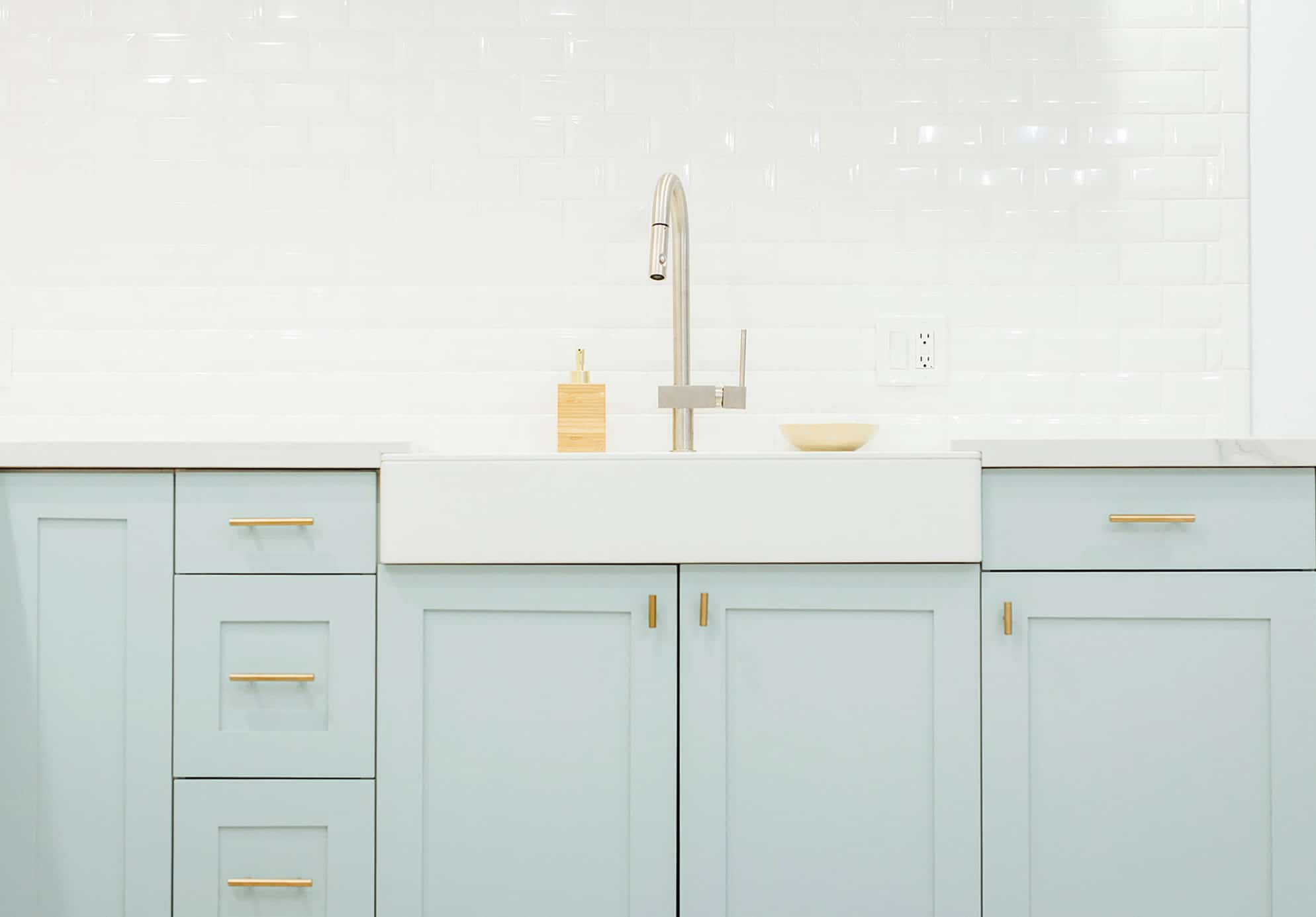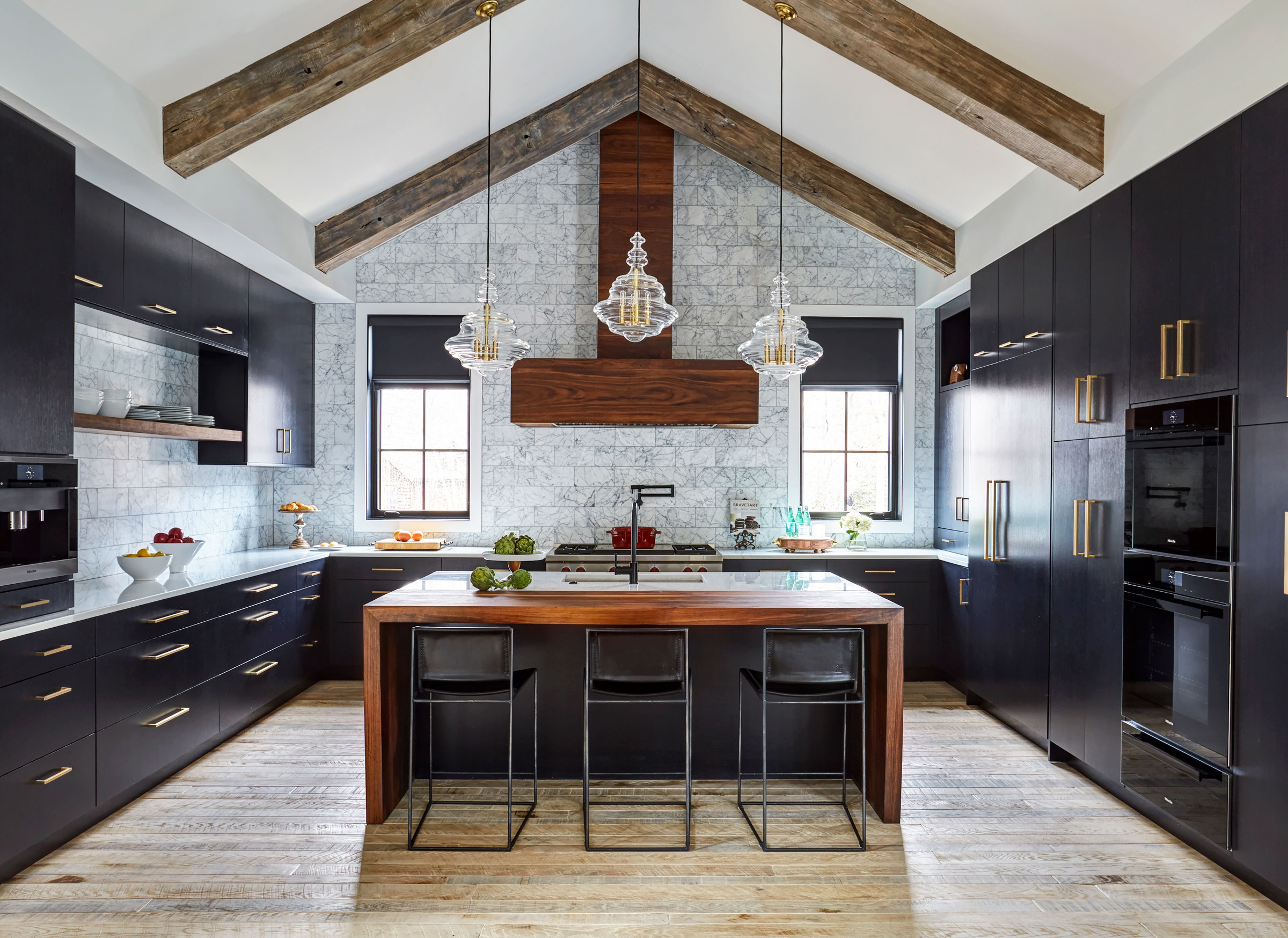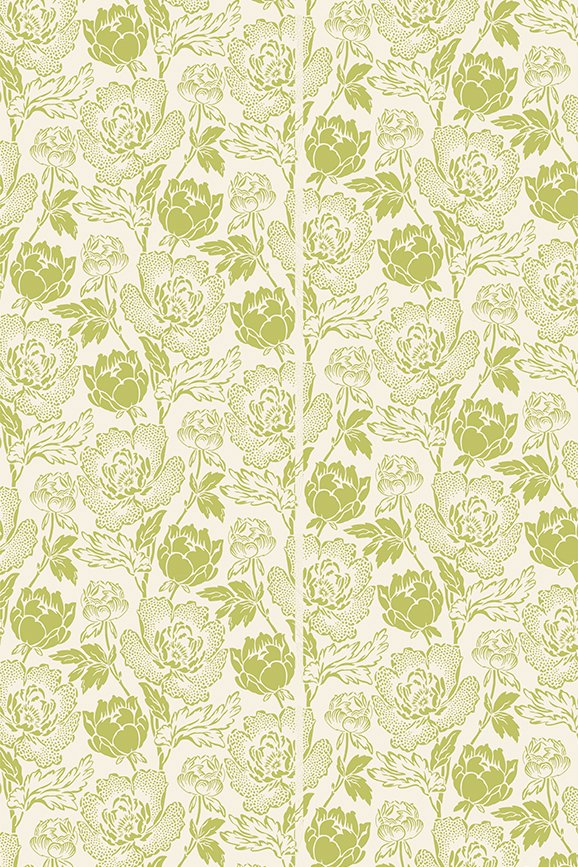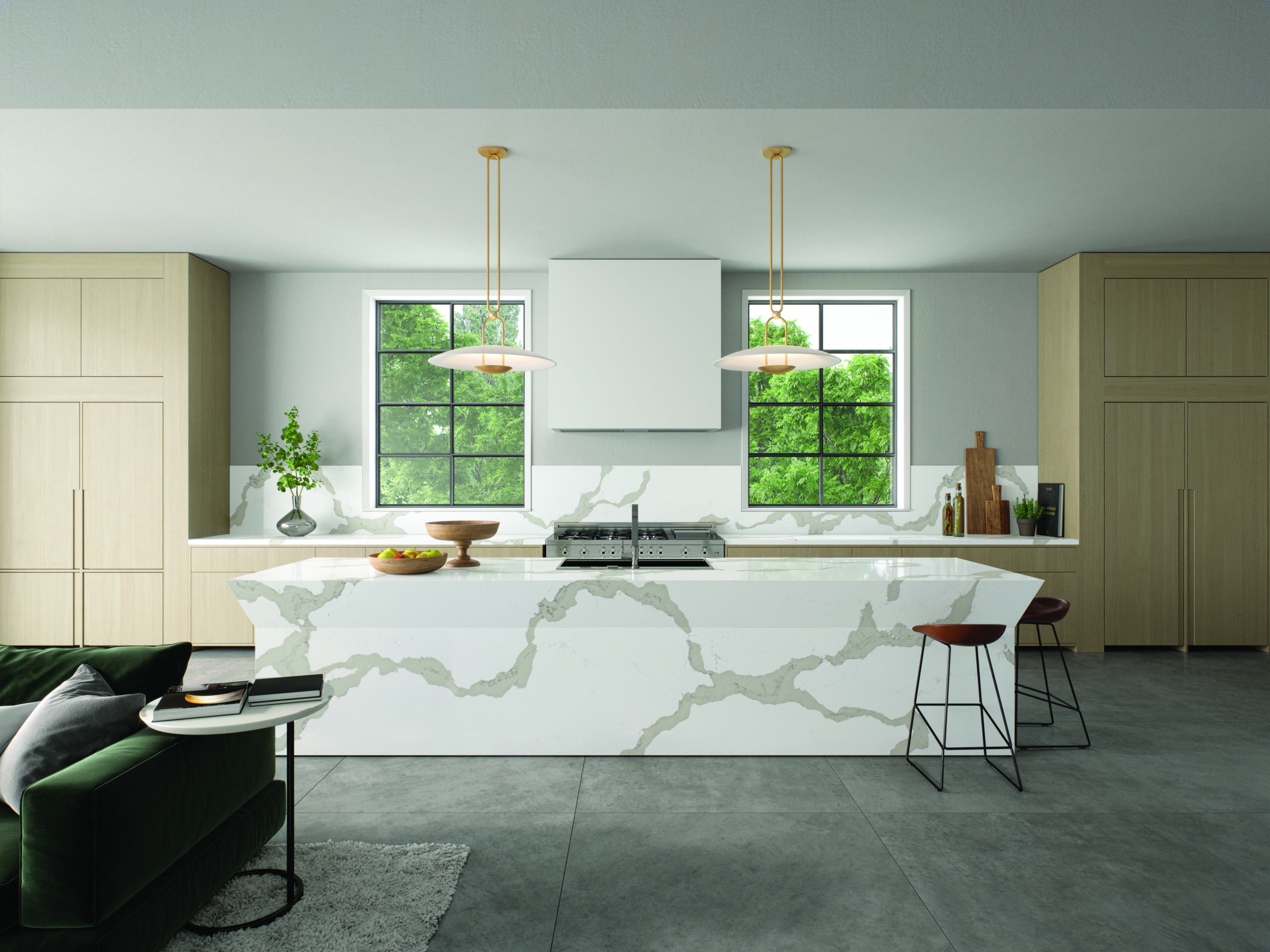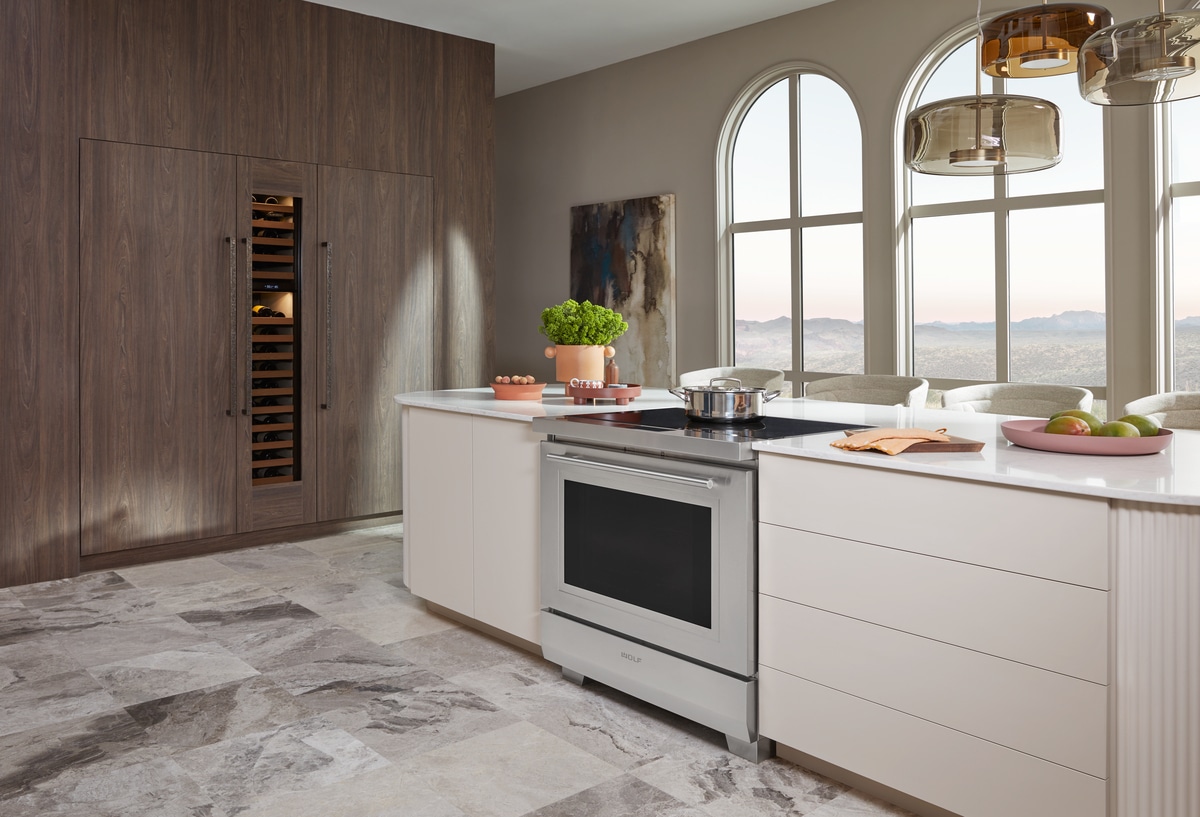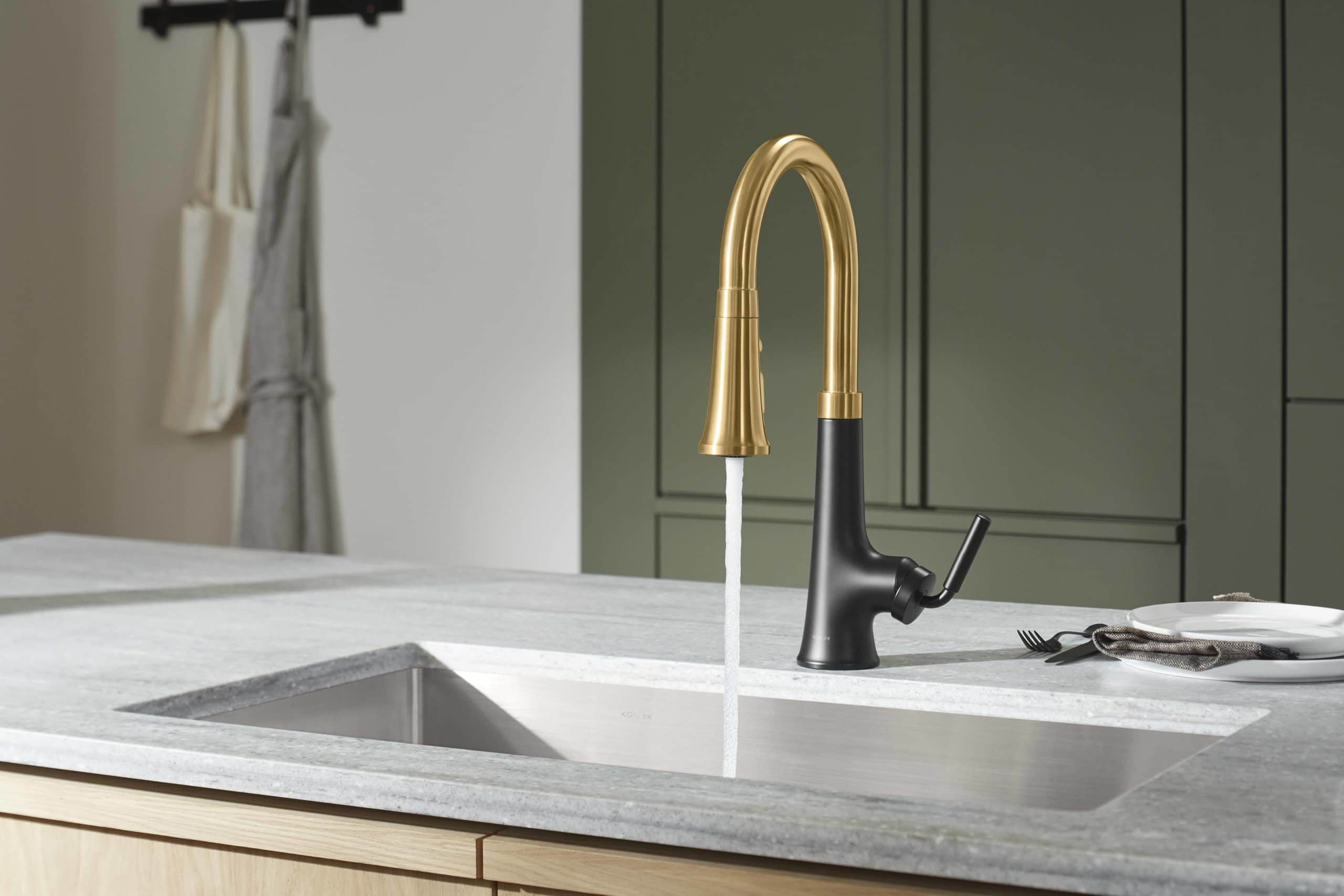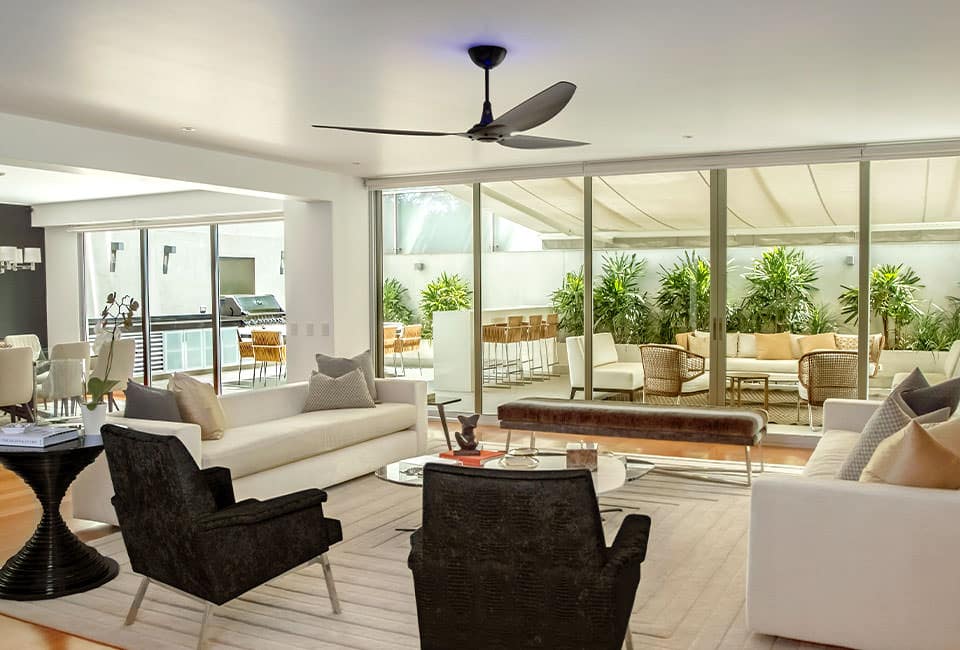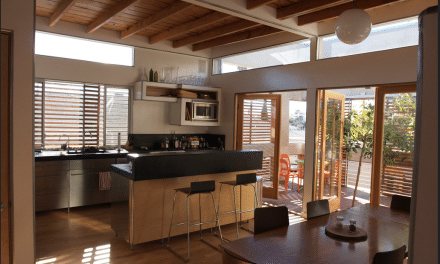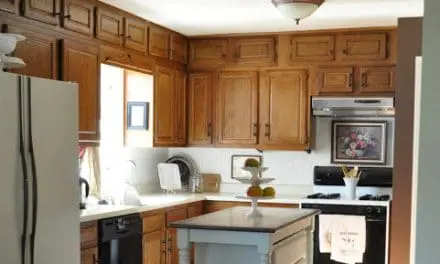Image credit: True Residential
By Elaine Markoutsas
Fresh kitchen trends for 2021!
Much of the impetus for style trends in the kitchen comes from Europe. It’s a more modern and clean aesthetic that offers functionality that Americans crave, one professional told the National Kitchen & Bath Association (NKBA) during its annual survey. Add to that a sustainable focus, lighting, storage needs and gadgets galore—particularly the smart kind—and we have a good idea of what the kitchen will look like moving forward.
While an open plan that integrates the family room remains popular, zoning has become key. Freestanding furniture, étagère-like shelving (especially populated with herbs and plants), screens, and cabinetry shape these zones around cooking, relaxing and entertaining.
For the most part, more modern looks translate to simpler lines and less-fussy crown molding and embellishments—or none at all. Islands are getting bigger and changing form as demand for more space increases and the kitchen becomes even more of a gathering spot than ever before. Lighting has emerged as a pivotal design tool, with contemporary shapes and styles a pleasing counterpoint to more traditional schemes. Smart appliances highlight features that dovetail with cuisine preferences, like air frying, steaming, or wok cooking. And more sustainable, energy-efficient cooktops feature induction technology. Grocery shopping habits have also changed, creating a need for smarter storage and intentional inventory.
While the open-plan kitchen carved the footprint for work and school spaces to overlap, the need for multitasking harmoniously and healthily has never been greater, and it’s a change that is likely to remain. The COVID-19 pandemic has had a profound impact, shifting our focus on how to make the kitchen function at the highest level while not only looking good but actually being good for us, in terms of wellness and sustainability.
Both the Kitchen and Bath Industry Show (KBIS) and the International Builders’ Show (IBS) took place virtually this year but were not at all short on well-designed products with enhanced functionality. Here’s an eco-spin on 10 kitchen trends to keep in mind when building or renovating your eco-friendly kitchen:
1. MONOCHROMATIC KITCHENS GO BEYOND BASIC WHITE
White has been the perennial go-to for those who like safe. But guess what? The color welcome mat is out. Cue design editors’ applause. Sure, the neutrals aren’t going away. But color elicits emotion, and it’s time for kitchens to go bold. You will find unexpected colors and even black for a dramatic option.
Painted cabinets appear to be on the verge of a strong comeback, following a trend to more customization. Among the color leaders: blue and green, sometimes playing out with different shades in different zones (think navy and cobalt, ocean and Tiffany aquas, olive, sage and hunter green). To be sure, Internet searches for the color green have boosted by 50 percent in 2021.
Color, of course, has been adding pop to appliances for a few years—especially in bold shades including red, orange, blue, and even emerald at True Residential, a brand that began in commercial refrigeration and has extended that same performance and quality to the home along with its commitment to reducing its carbon footprint through energy conservation, recycling, and environmentally conscious production processes. True’s newest shade, Juniper, is expressed in a calming deep blue gray. Samsung, whose sustainability approach takes into account the United Nations’ Sustainable Development Goals, carry Bespoke refrigerators in unconventional pale blue and pink shades, with the possibility of creating a color-blocked look with four quadrants.
ECO-SPIN: CHOOSE PAINTS WITH ZERO-VOCS AND COLORFUL APPLIANCES WITH RESPONSIBLE MANUFACTURING PROCESSES
SPOTLIGHT ON: CLARE
Clare is dedicated to delivering environmentally friendly paint in designer-curated colors via a limited but spot-on palette. One hundred percent of its paints are zero-VOC, GREENGUARD Gold Certified, and are compliant with USGBC’s LEED regulations for green building. Plus, their factories have low waste production methods, water conservation systems throughout and use recycled packaging. Large peel-and-stick samples allow a good sampling of color without picking up a brush to test. Their ultra-premium interior wall paint is self-priming, applies easily and delivers uniform coverage with an exceptionally durable finish that resists dirt, grime and mildew. Image credit: Paint Color, Headspace; Photo, Jenisse Photography; Kitchen, Robyn Meacham, The Sweet Simple Life via Clare
2. WOOD FINISHES—REAL OR FAUX—SPOTLIGHT GRAIN AND LUSTROUS HUES
Wood lends warmth to a room—and the use of it in kitchens extends beyond cabinetry to reclaimed wood ceiling beams, countertops (with exciting organic slabs featuring live edge, for example) and flooring. It’s not as much about the species or color of wood these days but rather the grain itself, which adds a graphic quality that can be a formidable design tool, especially with horizontal patterns that add surface interest to modern cabinetry. It’s the grain that’s emulated in faux wood eco versions as well, which require less maintenance and won’t rot. High-definition digital printing on porcelain tiles has enabled extraordinary reproduction of wood grain and different species, with a trend moving to more natural and untreated wood that evokes a sense of nature. Warm shades of cappuccino have a huge following as do gray-toned browns. Ash is advancing, and although its grain is subtle, the paler-than-oak hue is appealing, and it teams up with warm tones of natural or manmade stones. Black, too, is having a dramatic moment, especially when balanced with warm woods and brass accents.
ECO-SPIN: OPT FOR SUSTAINABLY MINDED WOOD FINISHES, AND DON’T FORGET THE EXTRA BENEFITS FROM FAUX WOOD PRODUCTS
SPOTLIGHT ON: CRYSTAL CABINET WORKS
Crystal Cabinet Works is chain of custody certified, so it tracks FSC® certified material from the forest to the consumer, which assures the wood is coming from well managed forests. In addition, recycled and rapidly renewable materials are used, with no added formaldehyde (NAF) boxwork. Crystal’s custom cabinets earn available points for many green building ratings systems, including LEED and the National Green Building Standard as well as local programs. Image credit: Courtesy Crystal Cabinet Works; Designer, Feather Nolan; Photo, Michael Kaskel
3. LOOK UP: CEILINGS ARE FINALLY GETTING THE ATTENTION THEY DESERVE
Designers are turning their attention to that fifth wall with wood beams, boxed beams, planking or bead board and even ceramic tiles that may extend up and over side walls, adding character to any kitchen. While many of the painted white treatments embrace a country style, modern applications assume a totally different vibe. Light blonde wood with a horizontal grain, for example, lends a mid-century modern look to a kitchen. But it doesn’t stop there. Those more adventurous are looking at the ceiling as a canvas for pattern. Wallcoverings with a floral, geometric or tropical note, or even more artistic murals are particularly striking in those white or neutral spaces.
ECO-SPIN: DRESS UP YOUR CEILING WITH SUSTAINABLE, RECLAIMED AND SALVAGED WOODS OR EVEN ECO-FRIENDLY WALLPAPER
SPOTLIGHT ON: FARROW & BALL
British brand Farrow & Ball is known for its beautiful paints and distinctive palettes as well as its lovely handcrafted wallcoverings that are deliberately green. The high-quality FSC® certified paper is sourced from sustainable forests with eco-friendly ingredients in small batch production. Water-based, low-VOC paints are used, and even the paste is formulated to minimize waste, as it is sold in powder form, giving it a longer shelf life. The concentrated formula fosters efficiency—you can hang up to five rolls with a single recyclable tube. None of the products, including glazes, contain any animal derivatives. The company also concerns itself with post production, recycling 100 percent of its dry waste and 97 percent of liquid waste at its own water treatment facility. Image credit: Peony and Wisteria, Courtesy Farrow & Ball
4. LEDS ARE LEADING THE WAY IN LIGHTING EFFICIENCY
Pendant lights are trending in Instagram searches. Larger-scale cages and globes are popular shapes, and dramatic when hung in multiples. But other shapes in a variety of materials—tubes, nest-like organic clusters—add drama to an island and/or dining surface. Bamboo and rattan are trending as well, as they add a warm, natural touch. But it was the introduction of LEDs that has been nothing short of revolutionary. And where they used to be mostly utilitarian, they’re catching up in style. Not only are they efficient and long-lasting, they have boosted the designer’s tool box, offering super thin applications that can twist into unconventional shapes that weren’t possible before. Islands and tables have become prime locations for dramatic installations that act as sculpture. Just look at David Trubridge, who has taken some of his earlier collections like the best-selling Cloud (launched in 2008) that were designed in plastic, and reimagined them in ultra-sustainable materials such as bamboo, a renewable grass, as an expression of his commitment to sustainability and respect for the environment.
ECO-SPIN: LOOK FOR THE ENERGY STAR LABEL ON LIGHT FIXTURES

SPOTLIGHT ON: DAVID TRUBRIDGE
Weaving together a visual story of travel, sustainability and a celebration of biophilia, New Zealand-based lighting designer David Trubridge uses earth-friendly materials like bamboo to craft sculptural lighting that treads lightly on the earth. The pliability of bamboo makes it perfect for the spheres and organic shapes of the award- winning designer’s innovative pendants, including Coral, which dots the Koroomba House in Scenic Rim, Australia with texture reminiscent of bucky balls and dodecahedrons. Starting with the materials, his small company’s focus is on minimizing waste, and making sure that the waste that is generated isn’t toxic to the environment. What doesn’t go to the landfill is recycled, down to the sawdust collected and clean burned. Each lamp comes with a kitset that is minimalistic and lightweight, contributing to a reduced carbon footprint for shipping, which Trubridge says is a way to “help preserve our beautiful sea and land environments.” Plus, everything is shipped in a recyclable cardboard box. Trubridge supports eco-causes like the Maraetotara Tree Trust, a registered charity that protects, enhances and restores all 86 kilometers of the Maraetotara (MTT) River in New Zealand. Since 2013, 13,000 new native trees grown from seeds or cuttings gathered in the river valley have been planted. This effort improves the ecosystem and reserves habitats for regenerating native plants and wildlife. The designer donates $1 for every lamp sold, more than $10,000 per year. Image credit: Coral Pendant, David Trubridge; Architect, Shaun Lockyer Architects; Photo, Scott Burrows
5. MULTI-TASKING WORK SPACES ARE GAINING TRACTION, WITH ISLANDS DOUBLING UP, STRETCHING OUT OR STEPPING DOWN
Double islands were a popular feature in humongous McMansion kitchens. Not everyone has that kind of real estate. But you can double up on function by re-thinking the island space. Stepping down to create multiple levels is one way to incorporate an eat-in or work space. If there’s a large footprint, the island size can be ramped up—in effect, creating the equivalent of a pair of islands, but in one monolithic form. Storage and cutouts for pulling up chairs enhance efficiency.
Quartz continues its reign as top choice among designers, who rave about stone mimicry, dramatic veining and book-matching capabilities. While the choices are turning heads, the easier maintenance and better durability (it’s stronger than granite) are the deal makers.
ECO-SPIN: SELECT ECO-FRIENDLY MATERIALS WHEN OUTFITTING YOUR KITCHEN-TURNED WORK AND SCHOOL-FROM-HOME STATION
SPOTLIGHT ON: CAESARSTONE
All Caesarstone surfaces are non-porous, mold and mildew resistant, low-VOC in accordance with GREENGUARD’s Indoor Air Quality standards, and clean easily with no need for chemical detergents. The recycled quartz stone surfaces contain up to 42% reclaimed quartz—making a real impact on preserving the world’s precious resource; raw materials are stored safely to prevent seepage into the environment. Calacatta Maximus, part of Caesarstone’s Whitelight Collection, enables designers to utilize two slabs of the same stone and seamlessly line up the edges, creating a “super max” length for large islands, countertops, and backsplashes. Image credit: Courtesy Caesarstone US
6. SUSTAINABILITY IS MORE THAN A BUZZWORD
Wherever it’s doable, consumers are seeking out materials that are organic, eco-friendly, recycled and sustainable. That means materials from the outside in: windows, walls and wall paints and coverings, cabinets and hardware, countertops, backsplashes, floors, appliances and lighting. The good news is that there’s no sacrifice of style for eco-functionality. Surface materials can be statement makers. Vetrazzo, for example, produces artisan-made slabs of 100 percent pre- and post-consumer recycled glass. Its signature confetti-style patterns actually resemble terrazzo and are available in a range of colors. Each piece of glass is placed by hand into the composite to ensure a smooth, uniform surface. Sicis, an Italian mosaic company, produces a dazzling line of large-format glass slabs and tile called Vetrite. It’s produced with two layers of safety glass sandwiching colors, textures, metallics and even textiles that can be used for walls, floors, counters and furniture cladding. Its Gem and Marble collections feature bold veining and daring shades like turquoise, fuschia and gold—truly resembling agate gemstones and marble. And quartz manufacturers have upped their game with products that look like rare slabs of stone, but with none of the maintenance worries. Exaggerated veining and bookmatching enhance design installations. Cambria counts among its natural quartz collections a destination-minded collaboration with Gensler, as well as a few designs made from recycled Cambria stone like Big Sur Mist, Brittanicca Block, Buxton, and Sanibel Shoreline.
ECO-SPIN: RECYCLED, ORGANIC AND ECO-FRIENDLY MATERIALS HIT THE AESTHETIC MARK WITHOUT SACRIFICING STYLE
SPOTLIGHT ON: CAMBRIA
As an American-made and family-owned company, the brand is committed to the environment, which informs every step of its process, from mining and transportation to recycling, water usage, power generation, lighting design, and tooling. Its sustainable best practices begin with the company’s responsible mining approach, which includes restoring its own quarry sites after extraction and recycling 100% of its water used in manufacturing and fabrication. Cambria is a Gold Member of the USGBC and has achieved GREENGUARD and GREENGUARD Gold certifications. Image credit: Stone Pattern, Buxton, Courtesy Cambria
7. CHOOSE ENERGY-EFFICIENT APPLIANCES
Take-out and ordering-in was a major trend in 2020, but so was cooking at home and, therefore, re-evaluating our appliances. As major brands continue to beef up their Energy Star offerings, one category—induction cooktops—is ramping up in popularity. Top European chefs have given them the seal of approval, countering the gas-is-superior cuisine argument. In addition to counter installations (in Europe, some are integrated seamlessly into porcelain and even wood), induction also is being incorporated into range tops—along with other options for healthy cooking: air fryers, wok, steam and sous vide. The GE Profile Smart Range allows cooks to dial in the exact temperature for an induction-ready pan, via smart device or the range’s display. And Wolf just launched its newest Wi-Fi enabled induction range, which features a minimalist aesthetic. Instead of knobs, there are touch screen controls, which also allows the overall height of the interior cavity to be raised. The dual VertiCross convection oven features two high-speed columnar blowers that create columns of airflow better for multi-rack cooking. Head demo chef Joel Chesebro said what they appreciate about induction technology is its energy efficiency: “We all are trying to build greener homes.”
ECO-SPIN: INDUCTION COOKTOPS AND ENERGY STAR APPLIANCES SAVE ENERGY
SPOTLIGHT ON: SUB-ZERO, WOLF, AND COVE
The company, which manufactures refrigerators (Sub-Zero), ranges (Wolf) and dishwashers (Cove), is based in Madison, Wisconsin. It hits all of the sustainability checkpoints, as it takes a holistic approach in the materials used and the way products are manufactured. More than 75 percent of its stainless steel and up to 50 percent of plastic in refrigerators are recycled materials. Its manufacturing facilities are approaching zero-waste status. More than 566 tons of scrap that otherwise would go to landfills are recycled. Wastewater has been eliminated, as nearly 200,000 gallons of water are recycled each year. At the Wolf plant, new LED lighting has saved more than 1,000 kilowatt hours of electricity per year. An installation of a 3.94 megawatt solar energy system is expected to decrease annual utility consumption by 30 percent at the Arizona facility. Forty percent of the brand’s appliances earned the Energy Star rating. Waste reducing features are built right into product, with food preservation technologies for refrigeration, ultra-efficient induction in ranges and sensor optimized cycles in dishwashers. The goal of energy-efficient products leads to long-lasting use—more than 20 years. At the end, the appliance can be recycled. At the headquarters’ campus, there’s also a two-acre organic garden and barn called Harvest Haven, which supplies nearly 70 percent of the fresh produce used by corporate chefs who serve seasonal menus to about 2,500 kitchen designers, architects, builders and product designers hosted each year as part of product training and education. Image credit: Courtesy Sub-Zero, Wolf, and Cove
8. HIGH TECH GOES TOUCHLESS AND VOICE ACTIVATED
Smart technology is also evolving. With the touch of a smartphone, you can monitor a rotisserie chicken on the grill or check out your fridge’s contents. Part of Samsung’s line is a refrigerator with a camera inside—handy so that you can see what’s inside when you’re at the grocery store and know what stock is low. GE Profile brought the tech to its GE Profile Smart Range, boasting an in-oven CookCam. Combined with WiFi capabilities, it eliminates the need to keep checking your roast, and allows you to adjust settings from any smart device.
Kohler’s Tone and Riff faucets, part of its Konnect family, pairs with Alexa and Google Home, and enables voice-activated technology to dispense measured amounts of water, with commands like “Turn my faucet on.” Then it fills containers to a preset level or dispenses a specific quantity. A motion sensor turns water on and off with a wave of your hand. The Konnect app also allows you to monitor water usage and be notified about unusual flow. Water leak detection is a real game changer. When Moen teamed up with Flo Technologies to create a device that calculates water pressure, low rate and temperature within a home’s water supply system and use AI to differentiate abnormal use, it cited a startling EPA statistic: more than 1 trillion gallons of water can be lost due to leaks. Grohe’s Sense Guard detects pipe breaks, shuts off water supply and alerts you via app. It also provides an early warning of incoming frost water.
ECO-SPIN: SMART TECHNOLOGY FEATURES ARE NOW THE BELLS AND WHISTLES IN KITCHEN APPLIANCE AND FAUCET DESIGN
SPOTLIGHT ON: KOHLER
The 147-year-old company is a global leader in design and innovations for the kitchen and bath, with a mission to bring heritage to connected products. It is working toward net zero environmental impact by 2035, which for the company means reducing or offsetting all greenhouse gas emissions and sending zero solid waste to landfill, as well as developing innovative energy and water-saving products. “We believe there is a delicate balance when it comes to technology in the home,” says David Kohler, president and CEO of Kohler, “and will continue pioneering opportunities for seamless control in the kitchen and bathroom with an eye toward gracious living and well being.” Image credit: Faucet, Tone; Courtesy Kohler Co.
9. PANTRIES AND ALL KINDS OF STORAGE ARE IN DEMAND
Organization always is a goal of kitchen remodeling, and the need has never been greater. Big shoutout to the pantry. If you have walk-in space, fantastic. Even the doors to these spaces have become design elements—with the use of glass, reclaimed wood barn doors, and louvered doors that allow for air flow and improve indoor air quality and food freshness. As upper cabinets seem to be making a comeback, so is floor-to ceiling storage, which is a good place for pull-outs and custom-designed pantry storage. With some of these designs, expect to see leaning ladders—not only an aesthetic tour de force, but practical for reaching those high spots, just like accessing books on a tall shelf in a library.
For high-end cabinet makers, compartmentalized storage is as essential as beautiful hardware, with flatware dividers and cubbies for tools like zesters and pizza cutters. Rev-A-Shelf’s new Maxx drawer system, developed with the Cabinetworks Group, is a tiered system with two slotted sections on top that pull up and away from the lower divided tray. It’s perfect for home office and school supplies as well. We’re also paying more attention to how we store food and leftovers, with better designed reusable containers.
ECO-SPIN: BUILT-IN STORAGE EXTENDS TO REUSABLE CONTAINERS AND ZERO WASTE
SPOTLIGHT ON: JELD-WEN
JELD-WEN uses recycled materials to produce high-value doors and windows. Its commitment to sustainability extends from efficient use of recycled materials to building long-lasting energy-saving products (like windows and doors that use AuraLast pine), and from lean manufacturing to operating close to markets to minimize fuel consumption and greenhouse gas emissions. Its proprietary process uses wood byproducts to make facings for molded interior doors. Image credit: Courtesy JELD-WEN
10. FROM THE AIR WE BREATHE TO THE WATER WE DRINK, THE FOCUS IS ON HEALTH AND WELLNESS
Lenova is one brand that features a residential faucet, Aqualogic, that converts tap water into ozonated water to safely kill pathogens. The broad spectrum antimicrobial qualities also kill mold, yeast and algae within seconds of contact and remove pesticides from fresh produce. Franke’s EcO3 Sanitizing System turns tap water into a powerful oxidizing cleaner, which the brand says can kill 99.9 percent of harmful bacteria including E. Coli, salmonella and staph, with a spritz of a spray bottle. And Kohler and GE have added products, Aquifer Refine and Smart Whole House Water Filtration System, respectively, that filter out harmful contaminants from your water.
Air purification systems, too—built into HVAC or portable—have experienced revved-up demand since the pandemic, as they pluck pollutants from the air and kill viruses, like LG Electronics’ PuriCare room and portable air purifiers and dehumidifiers, and Molekule’s PECO technology that utilizes free radicals (the same used to destroy cancer cells) to break down pollutants at a molecular level—including VOCs, bacteria, mold, viruses and allergens. But we’re also re-discovering the power of plants, which are natural air purifiers.
Biophilia—connecting with nature, either through live plants or organic materials—is a growing design trend. It was identified as a top-10 tile trend for 2021 during the Coverings tile and stone exhibition. Think tall garden walls, shelves filled with potted herbs, small-scale countertop containers with LED grow-lights, or Natufia’s fully integrated and automated hydroponic Kitchen Garden. The tall unit grows 32 plants (using non-GMO seeds) in handmade ceramic cups using automated water and LEDs. Benefits of Biophilia include boosting physical health, psychological well being and supporting cognitive function, making it an integral part of kitchen design.
ECO-SPIN: PURIFY YOUR AIR THROUGH HVAC/VENTILATION SYSTEMS AND BIOPHILIA-FOCUSED PLANTS AND HERBS
SPOTLIGHT ON: BIG ASS FANS
Ceiling fans were identified by the National Association of Home Builders as one of the top features buyers want in new homes for the 2021 marketplace. Now some companies are finding ways to add value, addressing air quality. The Haiku fan from Big Ass Fans is engineered with cutting-edge smart home technology. It’s part of BAF’s Clean Air System, which works to offer an air disinfection solution. With powerful airflow and ultraviolet (UV-C) technology, the fan safely eliminates airborne pathogens, including the virus that causes COVID-19, within 10 to 20 minutes, ensuring cleaner, healthier air. The fixture directs invisible light upward to kill harmful airborne agents that pass through the disinfection zone at rates greater than 99.9 percent. The tech is controlled with the brand’s mobile app. Image credit: Courtesy Big Ass Fans



